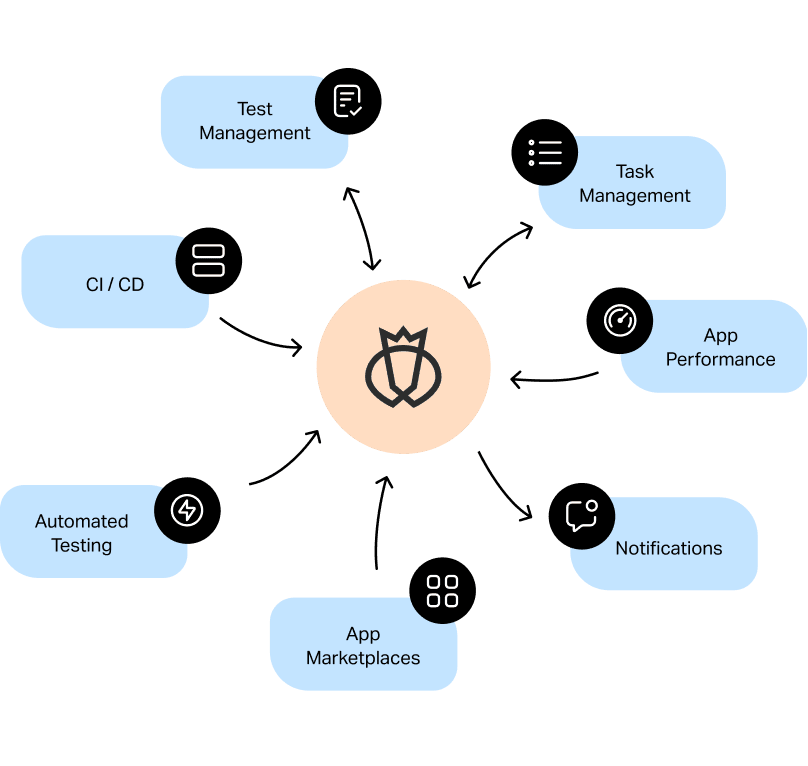From Guidebook to Automated Screening: A Comprehensive Overview to Transitioning Efficiently and Properly
In the world of software program testing, the change from manual to automated procedures has come to be a significantly important change for organizations looking for to enhance efficiency and precision in their testing techniques. The journey from handbook to automated testing is not without its difficulties, yet when approached purposefully and with a clear plan in mind, the advantages can be substantial.
Advantages of Automated Testing
Automated screening uses numerous advantages, improving performance and precision in software development processes. Automated tests can be run concurrently on numerous devices and operating systems, dramatically speeding up the screening stage contrasted to manual testing.
Furthermore, automated screening makes certain a greater level of precision in discovering flaws. Considering that automated examinations comply with predefined scripts, human error is reduced, resulting in more reputable test results. Consistency in testing is also improved, as automated examinations implement the very same steps exactly each time they are run. This consistency is crucial in guaranteeing that all functionalities of the software are extensively examined, lowering the probability of unnoticed bugs sliding via to manufacturing.
Picking the Right Tools

First of all, evaluate your goals and demands. Comprehend the range of your job, the innovations involved, and the skill collection of your group. This evaluation will help you determine the attributes and capacities you require in your testing devices.
Second of all, consider the compatibility of the tools with your existing procedures and systems. Seamless integration with your existing software application advancement lifecycle is vital to guarantee a smooth change to automation.
In addition, assess the scalability and flexibility of the devices. As your testing requires progress, the tools need to have the ability to adapt and suit modifications effectively.
Last but not least, aspect in the support and area around the tools. When executing automated screening, robust assistance and an active individual community can supply important sources and assistance. By meticulously thinking about these facets, you can choose the right devices that align with your demands and established the stage for an effective transition to automated testing.
Writing Efficient Examination Scripts
When crafting examination manuscripts, it is important to think about the certain needs of the software being examined and ensure that the scripts attend to all vital performances. Descriptive and clear calling conventions for examination manuscripts and test instances can enhance readability and maintainability. In addition, integrating mistake handling mechanisms within the test manuscripts can assist in recognizing and dealing with concerns promptly.
In addition, organizing examination manuscripts right into modular parts can enhance reusability and scalability, lowering redundancy and improving performance in examination script maintenance. Routine testimonials and updates to check scripts are vital to equal developing software program requirements and functionalities. By complying with these concepts, find more information testers can develop effective and robust test manuscripts that add significantly to the success of automated testing processes.
Integrating Automation Into Workflows
By flawlessly integrating automated testing devices like Selenium or Appium into the software program development lifecycle, groups can achieve faster responses on code modifications, leading to more tips here quicker bug discovery and resolution. This integration permits for constant screening throughout the advancement procedure, guaranteeing that any problems are identified early on, resulting in greater software application top quality. Proper assimilation of automation tools needs collaboration between development, testing, and procedures teams to develop a unified workflow that enhances efficiency and efficiency in supplying top quality software application products.
Guaranteeing a Smooth Change
Successfully transitioning to automated testing entails meticulous preparation and careful implementation to minimize interruptions and make best use of effectiveness in the software program development process - automation testing. To make certain a smooth transition, it is necessary to start by conducting a detailed analysis of the current testing processes and identifying areas browse around this web-site where automation can bring the most significant benefits. Involving with all stakeholders early on at the same time, including developers, testers, and project supervisors, is crucial for garnering support and buy-in for the automation initiative
Communication is vital throughout this change stage. Clear interaction of the goals, benefits, and expectations of automated screening aids to take care of any type of resistance or worries that may develop. Furthermore, offering sufficient training and resources for staff member to upskill in automation tools and methods is important for guaranteeing a successful transition.

Final Thought
Finally, transitioning from guidebook to automated screening offers numerous benefits, including enhanced effectiveness and dependability. By picking the ideal tools, writing effective test scripts, and integrating automation perfectly into process, organizations can make sure a effective and smooth shift. It is important to welcome automation as an important possession in software application testing processes to improve overall high quality and efficiency.
In the realm of software application screening, the change from handbook to automated processes has become an increasingly vital change for companies looking for to improve performance and accuracy in their screening methods. Automated tests can be run concurrently on several devices and running systems, drastically speeding up the screening stage contrasted to hands-on testing. Uniformity in testing is likewise enhanced, as automated tests implement the exact same steps specifically each time they are run.To make sure the successful execution of chosen testing devices, the creation of reliable test manuscripts plays an important role in validating the capability and performance of automated procedures - automation testing. By complying with these concepts, testers can produce robust and efficient test manuscripts that contribute considerably to the success of automated screening processes
Comments on “Exploring the Future of Automation Testing in Software Application Advancement”